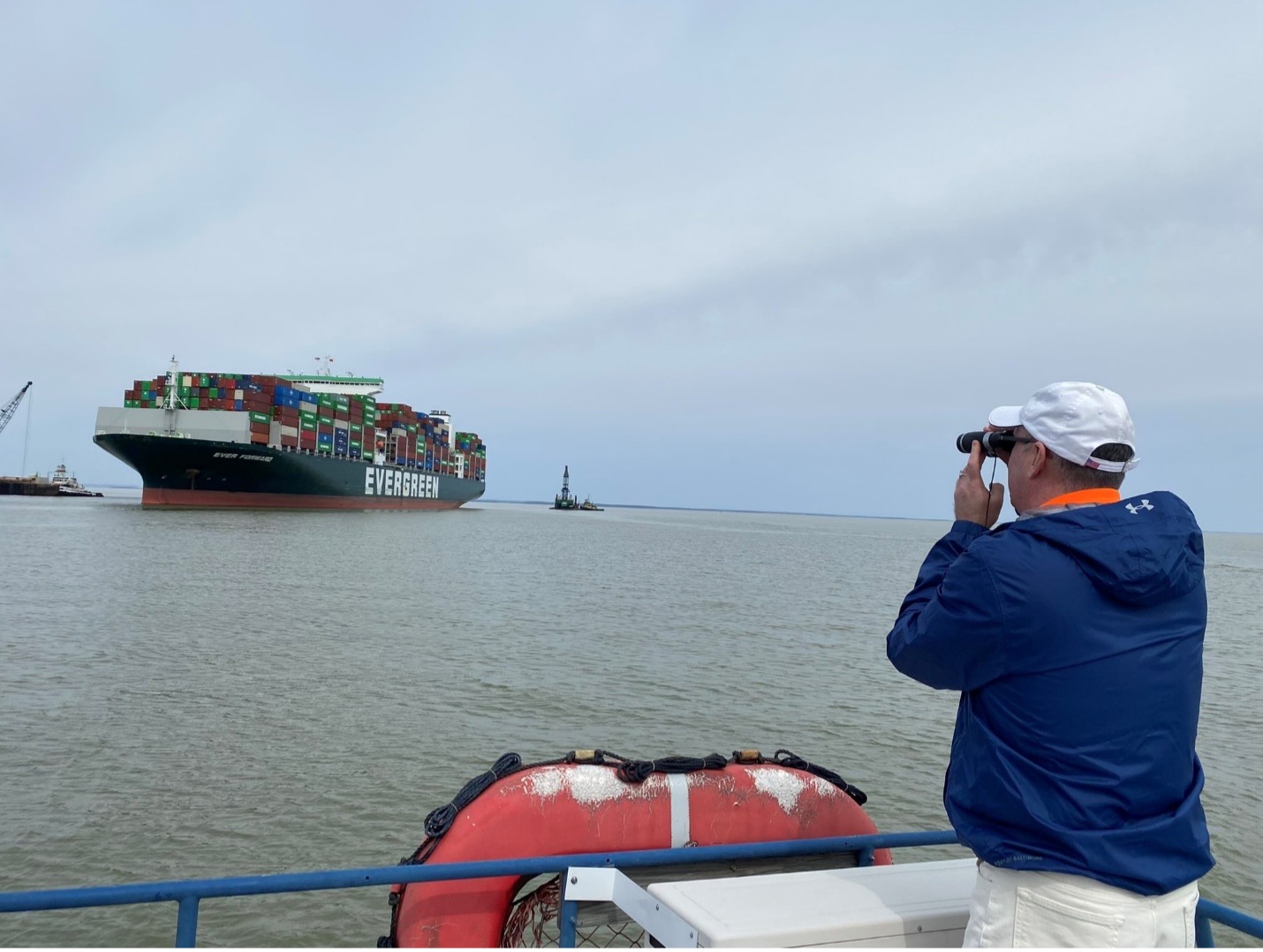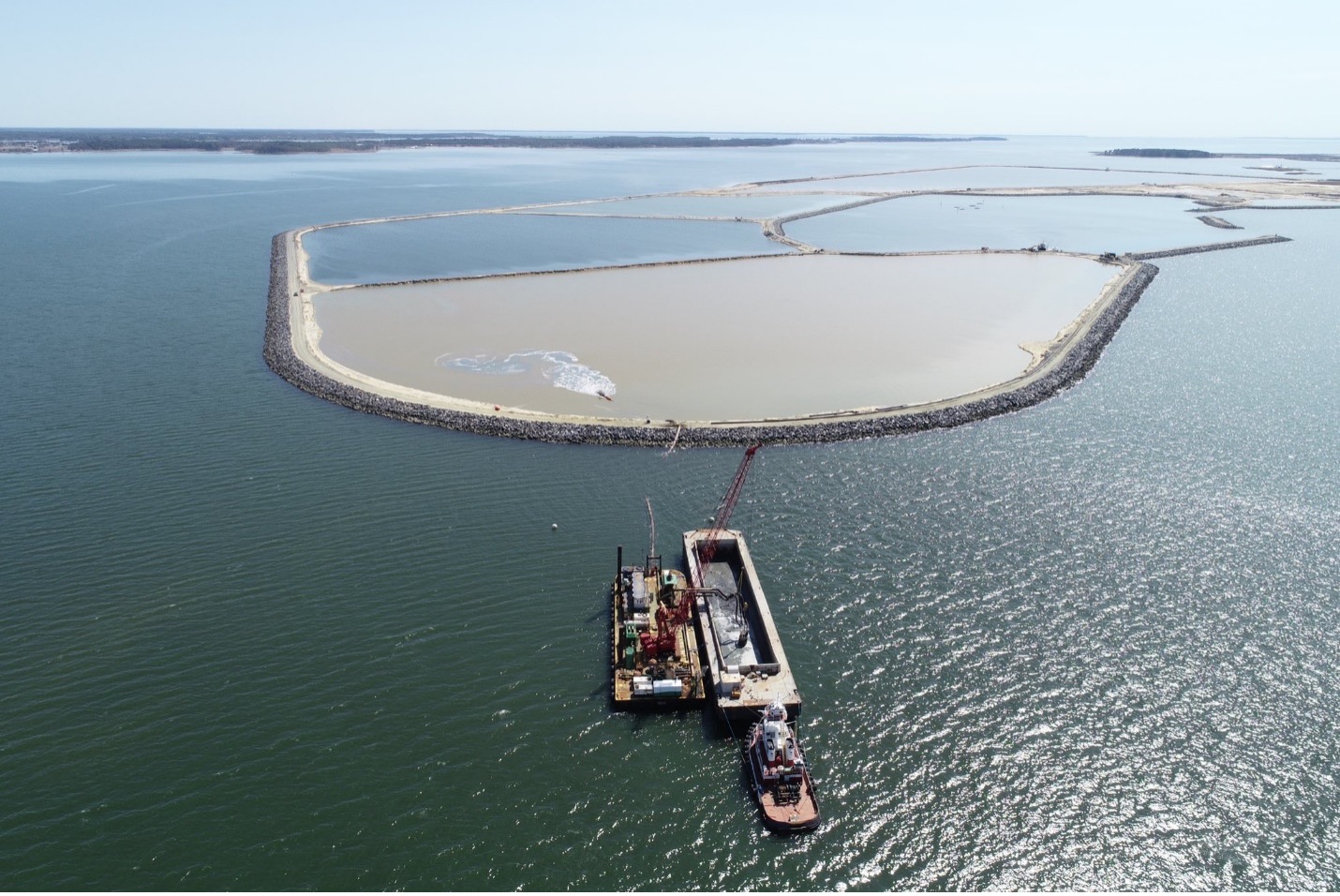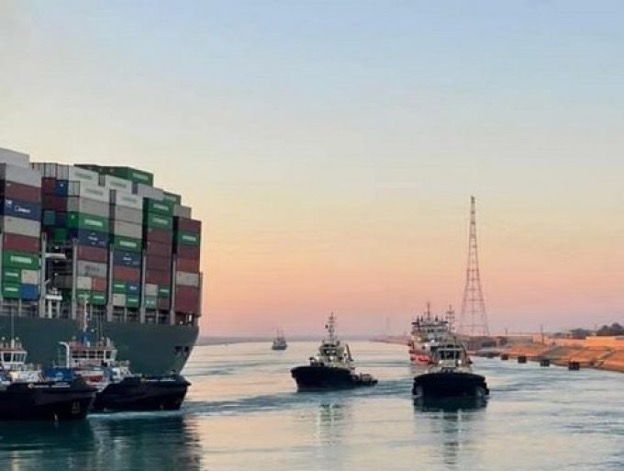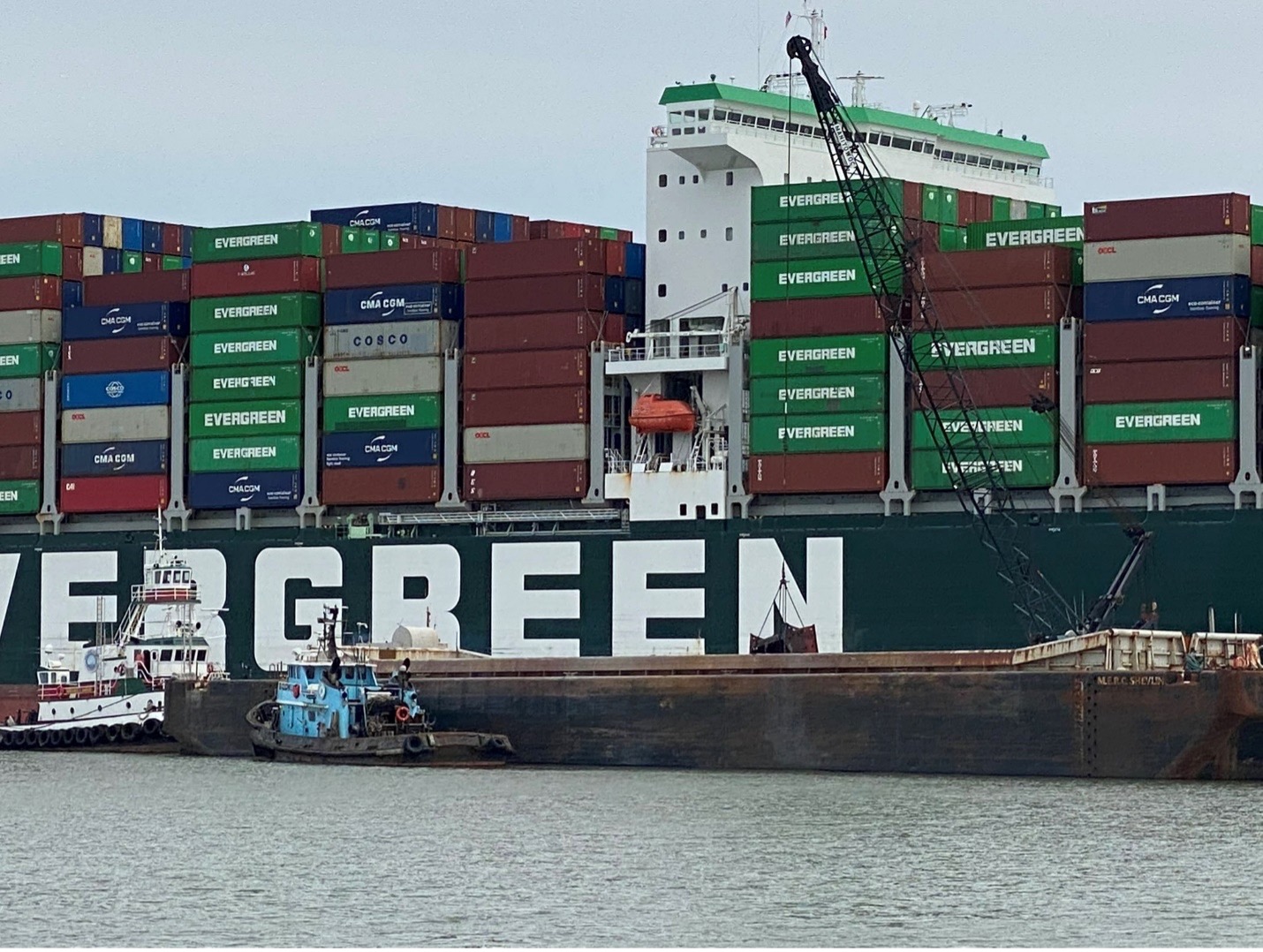Container Ship is Still Stuck in the Mud

A massive salvage effort is underway in northern Chesapeake Bay to free a container ship that ran aground on March 13. Crews are dredging around the ship holding 4,900 cargo containers and plan to use tugboats to free it. The ship’s owner had another cargo container that famously blocked the Suez Canal last year.
A massive cargo ship grounded in the Chesapeake Bay for more than a week is going to be stuck a lot longer as crews work to float the ship, the U.S. Coast Guard said.
The Ever Forward cargo ship ran aground on March 13 as it departed the Port of Baltimore heading for Norfolk, Virginia. The ship apparently strayed from the Craigshill Channel and grounded between buoys 14 and 16 near Gibson Island.
The cargo ship is not blocking any navigation and ship traffic continues to operate normally in the area.
Salvage Begins

On Sunday, March 21, dredging started to free the nearly 1,095-foot (334-meter) cargo ship loaded with cargo containers, Port of Baltimore Executive Director William Doyle said. Donjon-Smit and Cashman Dredging & Marine Construction are undertaking the messy work.
State and federal officials spent several days designing and approving a plan to refloat the cargo ship. The salvor, Donjon-Smit, first conducted underwater inspections of the vessel before determining the best course for crew safety and protecting the nearby environment.
Refloating Plan

To free the Ever Forward, crews plan to dredge the floor around the ship to create space between the propeller, rudder and seabed. The ship will also release ballast to lighten the load to help with refloating.
The goal is to free the ship enough that tugboats, combined with the ship’s main engine, can pull it free during high tide. The next full moon is April 16 for high tide, but the Evergreen is expected to be freed earlier. Northern Chesapeake Bay sees about a foot in tidal range, which could help the operations.
The Ever Forward still has about 4,900 containers on the ship when it ran aground 24' (7.3 m) deep into the mud.
“Right now, it's 24 feet, so basically as it traveled outside the channel, it almost buried itself into the bank,” Captain David O'Connell, the section Sector Commander of the Maryland-National Capital Region, told CBS News. "That's why it's not an easy operation of just putting some tugs on it and pulling it free."
Messy Work Ahead

Images from the site show the messy work underway as two dredges started pulling up the watery muck from the bay floor. Industry publications say two dredges sent were the Oyster Bay and Dale Pyatt. Cashman’s Dale Pyatt is equipped with a 28 cubic yard clamshell dredge, which is reportedly the largest in the Western Hemisphere. Each scoop can fill a large construction dumpster.
Initial dredging started on the ship’s starboard side and transom with dredging operations expected to continue 24 hours a day until the ship is freed.
Port of Baltimore’s Doyle said the dredged material is being moved to the Maryland Port Administration’s Poplar Island Ecosystem Restoration project. The environmental restoration project uses dredged material to restore a remote island habitat within the Chesapeake Bay that is home to hundreds of species of wildlife and waterfowl.
Shipper’s Notorious Past

The Taiwan-based Evergreen Marine Corp. made headlines in 2021 when another one of the company’s cargo ships, Ever Given, became grounded in a one-lane section of the Suez Canal in Egypt, touching off worldwide supply chain issues.
The ship was freed after six days but had impacted more than $54 billion in commercial shipping. The vessel was impounded by the Egyptian government and released after the ship’s owner paid a $600 million compensation claim. The Ever Given suffered bow crumple damage and has since been repaired, returning to service in late 2021.
The incident in the Chesapeake Bay hasn’t impacted ship traffic in the region, but it’s another public relations nightmare for the company. The company operates nearly 160 container ships around the world.
Cause Under Investigation

Investigators say the cause of the ship’s grounding in the Chesapeake Bay remains under scrutiny. The container ship ran aground shortly before 11 p.m. and was outside the navigable channel, the Coast Guard said. The Ever Forward, which was built in 2020, draws about 42.6' (12.9 m) of water.
Based on Automatic Identification system data, it appears the container ship failed to turn into the designated channel. The investigation will look at whether it was a mechanical problem or operator error.
The Coast Guard is enforcing a 500-yard safety zone around the Ever Forward during the ongoing salvage operations.
Port of Baltimore

The Helen Delich Bentley Port of Baltimore is one of the busiest ports in the United States with more than 2,300 ships visiting annually. The main channel leading into the port is 50' (15.24 m) and the Baltimore port is only one of two East Coast ports with a deep channel.
It allows bigger ships—carrying everything from furniture to steel and electronics—to deliver cargo to the port, which is also known for its storage capacity and off-loading ships efficiently.
The Port of Baltimore is one of the oldest ports in the country, celebrating 300 years as an active port in 2021.